Learning Center
Clarify summary versus synthesis
Synthesizing is often loosely defined as thinking beyond the text or having an aha. Although these are accurate explanations, many question how a synthesis differs from a summary or inference.
It’s not an either/or situation
There are several ways that readers infer–or think–about text:
- They can think in main ideas and most important information.
- They can visualize by thinking in pictures.
- They can think with predictions, questions, connections, and/or syntheses.
All of these thoughts are types of inferences. Think of inferring as the overall umbrella with the different comprehension strategies being spokes of the umbrella. Synthesizing is one of the types of inferences readers make.
Now, before readers can ever synthesize, they have to master summarizing. It’s not that a reader either summarizes or synthesizes. Rather, summarization leads to synthesis.
Text Clues + Background Knowledge = Inference
However, inferring (and specifically synthesizing) require the reader to go beyond what the text stated. The reader uses the details learned from the text, but then considers what they might mean. He draws a conclusion, reveals something new and bigger, that the author never literally said.
Now, here is where inference versus synthesis can become confusing.
Remember “new” and “multiple”
If a reader generates a new thought based on multiple details from a single text, then he is making an inference. He is thinking beyond the text; he is saying something more than the author did. Yes, he is inferring–but he is not necessarily synthesizing. The distinction between any inference and an actual synthesis is rooted in how many sources are in play.
According to the college and career-ready standards, a synthesis requires the integration details combined from multiple texts. Their aha has to come out of textual details that were strewn across two or more sources.
- The reader can summarize one text.
- The reader can infer a new idea from one text.
- However, to synthesize, the reader must integrate information from multiple texts.
Here is another way to look at the difference: All syntheses are inferences, but not all inferences are syntheses.
This is why synthesizing is at the top of higher-order thinking in Bloom’s Taxonomy and Norman Webb’s Depths of Knowledge. Students have to extend their thinking to create or formulate a new idea using what they have learned across multiple sources.
Introduce the Synthesis Test
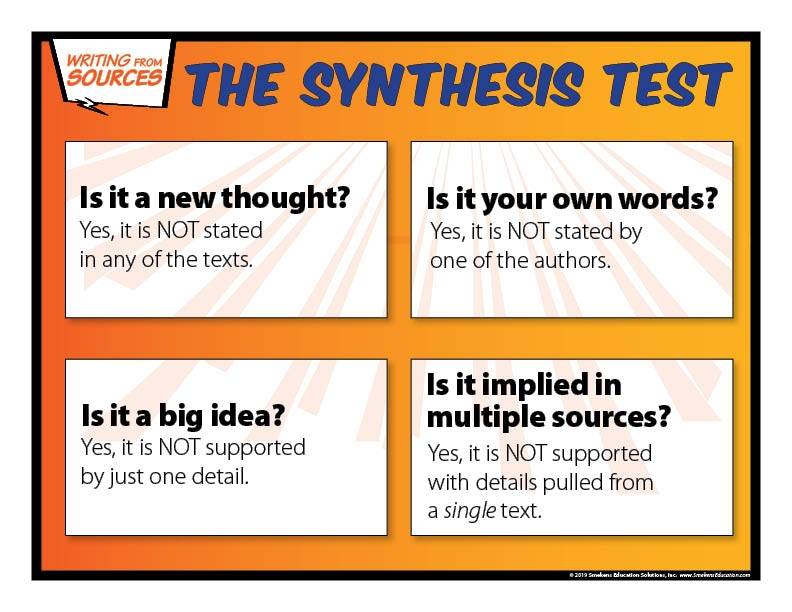 A synthesis, according to the ELA standards, should pass the four-part Synthesis Test.
A synthesis, according to the ELA standards, should pass the four-part Synthesis Test.
- It is a new thought. None of the authors made this point in their texts.
- It is your own words. None of the authors used these same words in their texts.
- It is a big idea. Several textual details support this synthesis. (It’s not a “big aha” if there are only 1-2 details to support it.)
- It is implied in multiple sources. The supporting textual details come from two or more sources.
Although summarization and synthesis are different, they are indeed related. Readers must be able to summarize literal details, then infer an implied idea from one text, in order to synthesize new ideas from multiple texts.

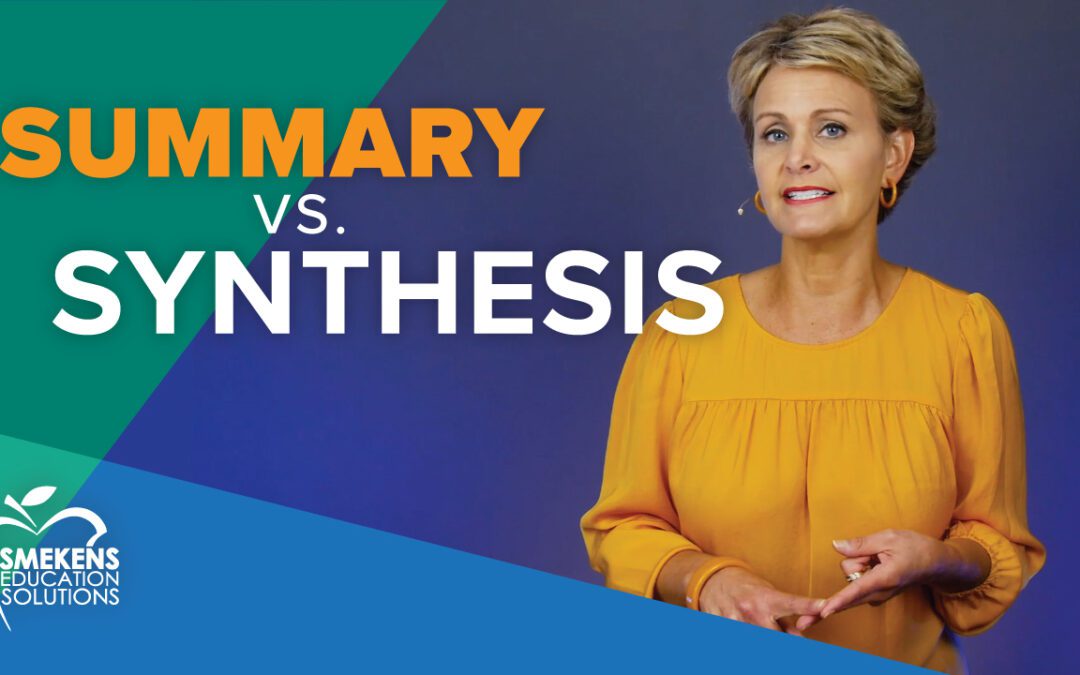
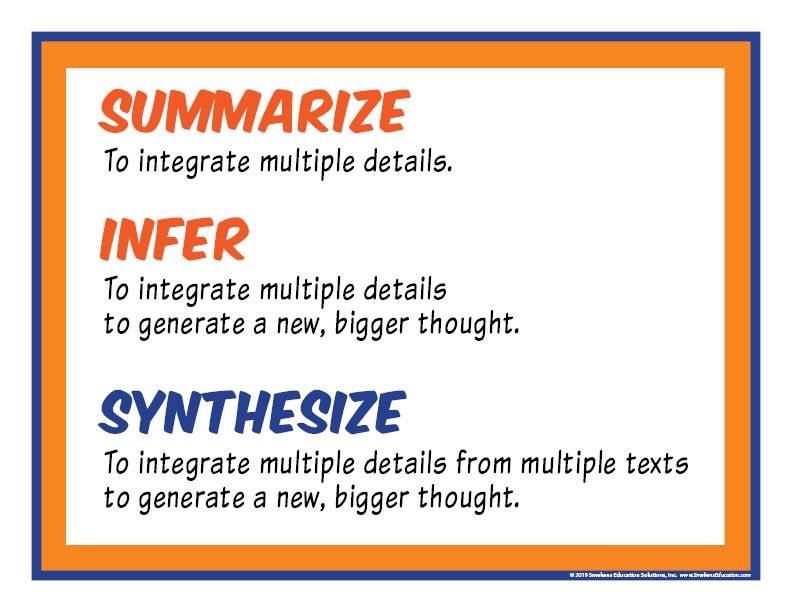
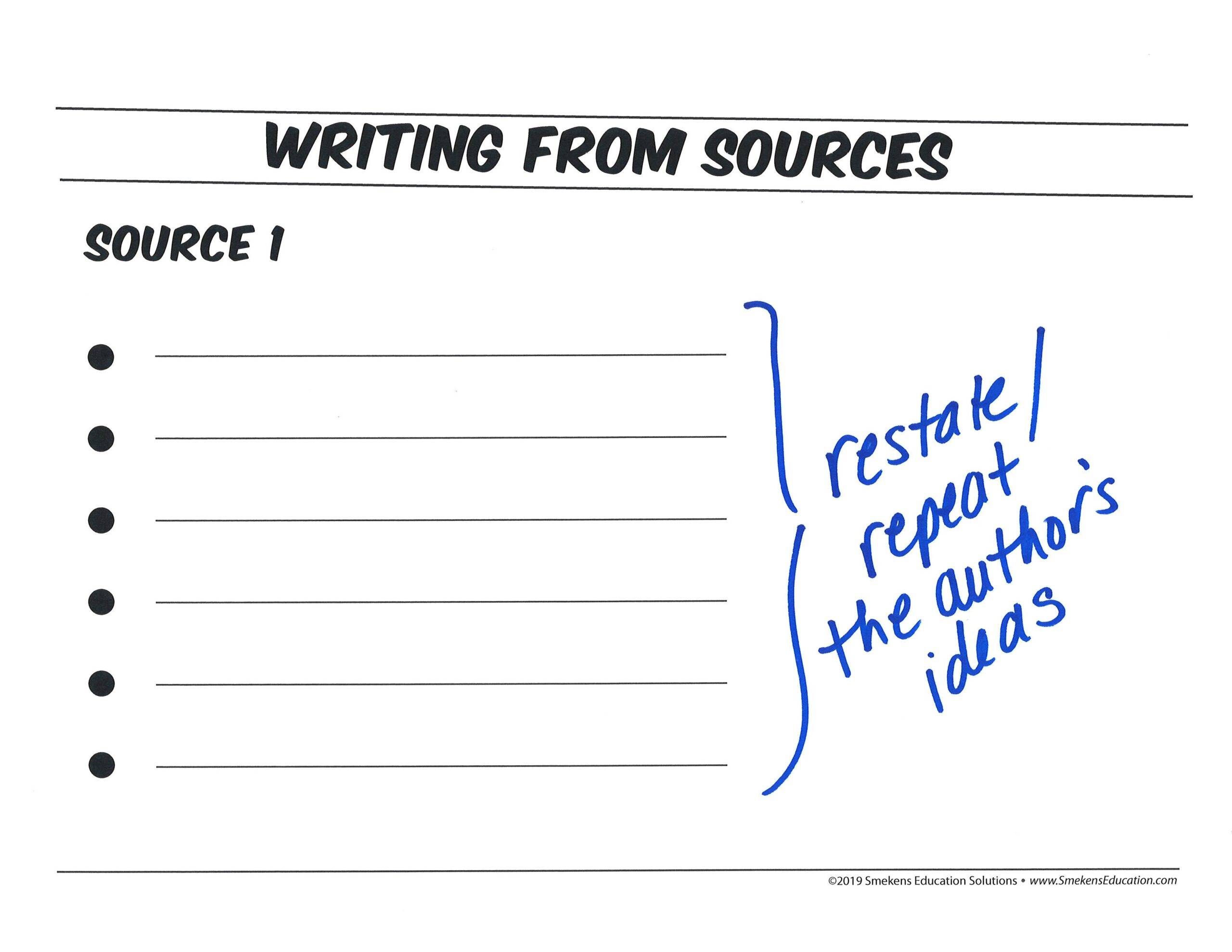
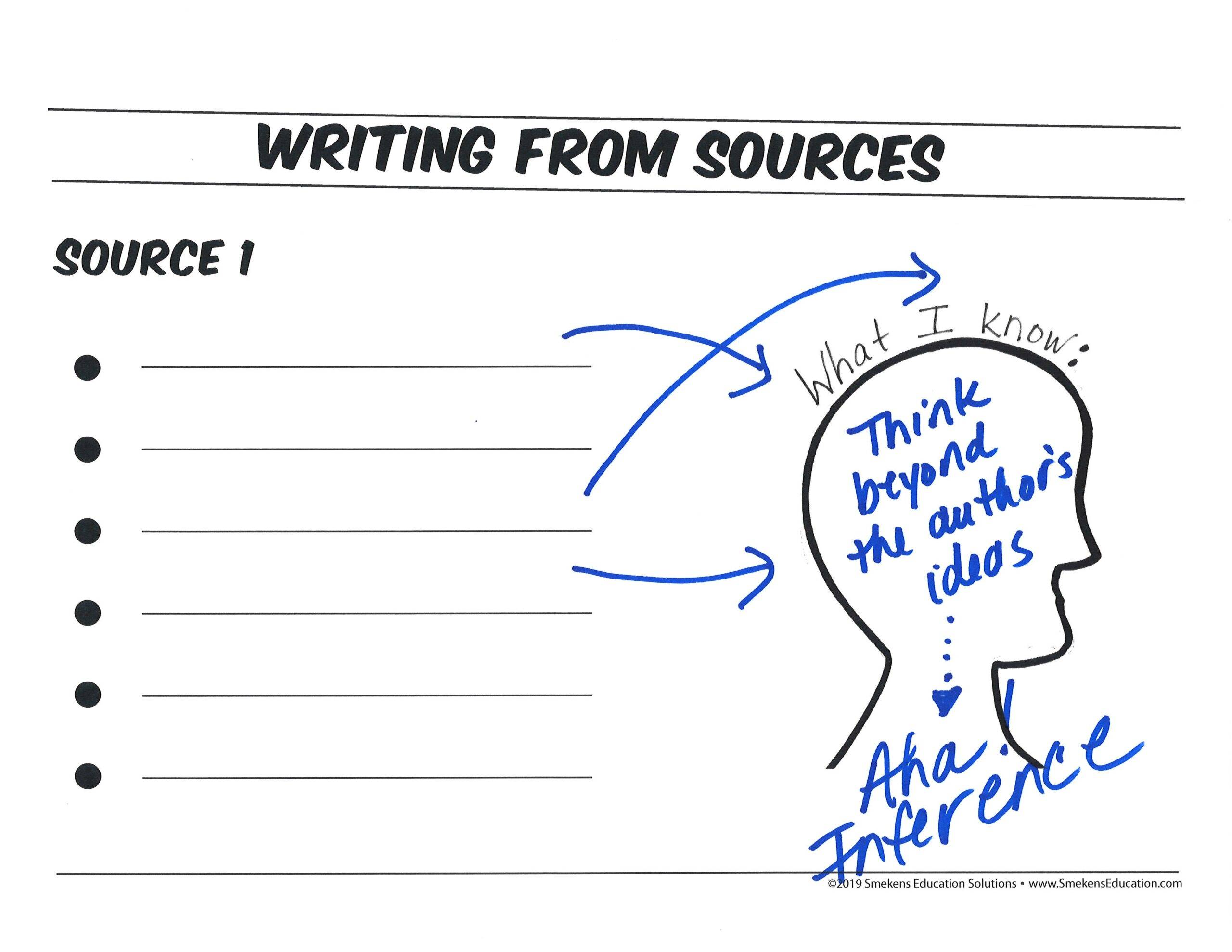
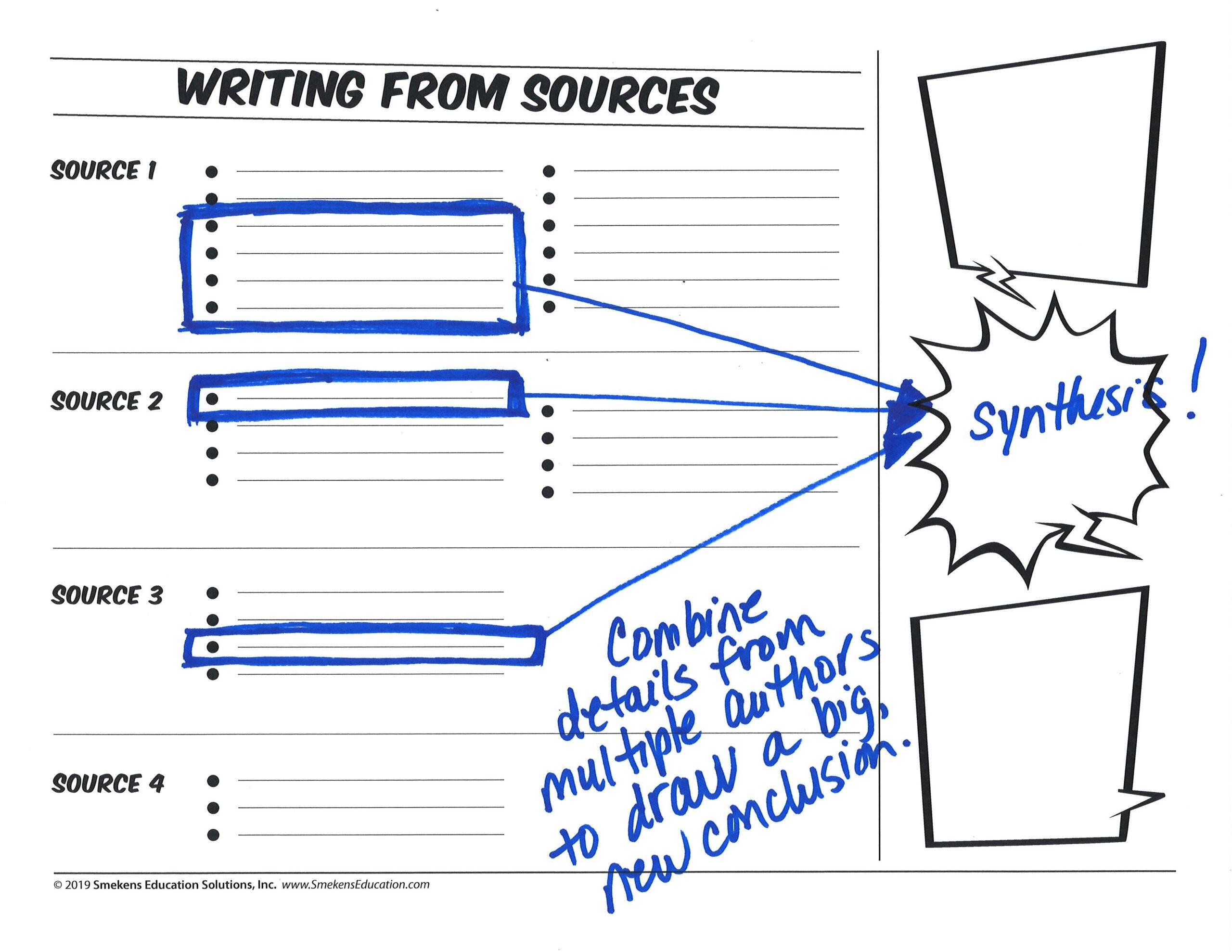




I found your page. It is very helpful. Thank you for sharing your videos. Hello from New Zealand.
Thank you for your kind words. We hope our content will help you as you teach students in New Zealand.